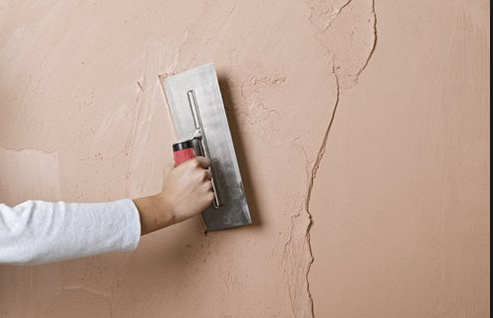Top Plastering Strategies to Boost Your Home Improvement Results
Top Plastering Strategies to Boost Your Home Improvement Results
Blog Article
A Comprehensive Guide to Learning Plastering Abilities for Your Improvement Needs

Vital Tools and Materials
Different necessary tools serve distinct functions, making sure effectiveness and precision throughout the plastering process. A top notch trowel, for circumstances, is vital for applying and smoothing plaster, while a hawk offers a secure platform for holding the material.
In addition to devices, selecting the ideal plastering products is essential. Gypsum-based plasters are generally favored for their flexibility and convenience of usage, while cement-based options are optimal for exterior applications due to their sturdiness. Water and bonding representatives play significant duties in attaining proper consistency and adhesion, guaranteeing that the plaster adheres successfully to the surface area.
Moreover, protective gear such as handwear covers, masks, and goggles is vital to guard versus dust and irritation during the application procedure. By putting together the right mix of devices and products, plasterers can improve their capability and create high-quality finishes, inevitably raising the total workmanship of their job.
Preparing Surface Areas for Plastering
Attaining a smooth and resilient plaster surface begins with thorough prep work of the surfaces to be glued. This fundamental step is important to making certain attachment and the durability of the plaster. Start by assessing the condition of the substratum-- whether it is concrete, drywall, or masonry-- eliminating any kind of loose paint, dirt, or debris that might interfere with bonding.
Following, repair any type of imperfections such as openings or fractures. Utilize an ideal filler to accomplish a degree surface; this can be important for protecting against future problems. When repaired, guarantee the surface area is tidy and dry, as dampness can jeopardize plaster adherence.
For permeable surfaces, it is recommended to use a bonding agent. This product improves bond and creates a dependable user interface in between the plaster and substratum. If dealing with formerly plastered surface areas, it might be required to mess up or sand the location lightly to supply a trick for the brand-new plaster layer.
Plastering Methods and Tips
Mastering gluing strategies requires both ability and technique to achieve a flawless surface. One essential method is the application of the plaster in multiple thin layers, as opposed to a single thick coat. This technique permits far better adhesion and minimizes the risk of fracturing. Start with a skim coat, guaranteeing it is equally spread out and leveled with a hawk and trowel. Use a straightedge to look for any imperfections prior to proceeding to subsequent layers.
When using the finish layer, utilize a page troweling method that involves holding the trowel at a slight angle and functioning in a round activity. This assists to produce a smooth surface and decreases the look of trowel marks. In addition, maintain a spray container of water convenient to mist the surface area lightly; this maintains the plaster convenient and permits smoother finishing.
Timing is crucial; work efficiently, as the plaster begins to establish. When the plaster has tightened however is still damp, utilize a damp sponge to carefully smooth the surface further. Finally, enable sufficient drying time prior to fining sand or paint, guaranteeing your difficult job causes an expert, top quality surface.
Typical Mistakes to Prevent

Another usual mistake is using plaster too thickly. Overzealous applications can bring about fracturing and prolonged drying times. It's necessary to apply plaster in slim, also layers, permitting each coat to completely dry adequately before adding much more.
In addition, not using the right tools can hinder the quality of the surface. Using inappropriate trowels or mixers can develop disparities in the plastering process. Constantly choose for top quality devices made for smudging tasks.
Lastly, many individuals ignore the significance of timing. Working in improper temperatures or moisture degrees can detrimentally influence plaster curing and drying out. It is a good idea to inspect climate condition and adjust your routine accordingly.
Finishing Touches for a Specialist Appearance
The last stages of a plastering job are important for attaining a refined, expert look. Once the plaster has actually dried completely, the following step is to analyze the surface for flaws.
After sanding, it's recommended to cleanse the surface area to eliminate any type of dirt and debris. A wet fabric is effective for this objective, complied with by a complete drying out duration. If needed, using a thin layer of finishing plaster can enhance the surface area even more, providing a seamless finish.
When the completing plaster is dry, one more round of sanding may be called for to attain the wanted level of smoothness. Lastly, consider using a guide prior to painting or wallpapering, which will certainly improve attachment and durability.
Verdict
Mastering gluing skills dramatically check that boosts the quality of renovation tasks. An extensive understanding of necessary devices, surface preparation, and effective techniques is important for accomplishing specialist outcomes.
Water and bonding representatives play substantial duties in accomplishing correct uniformity and attachment, ensuring that the plaster sticks effectively to the surface area. Plastering.


Furthermore, keep a spray bottle of water helpful to mist the surface area gently; this maintains the plaster workable and permits for smoother ending up. (Plastering)
If needed, using a slim layer of finishing plaster can improve the surface better, giving a smooth coating.
Report this page